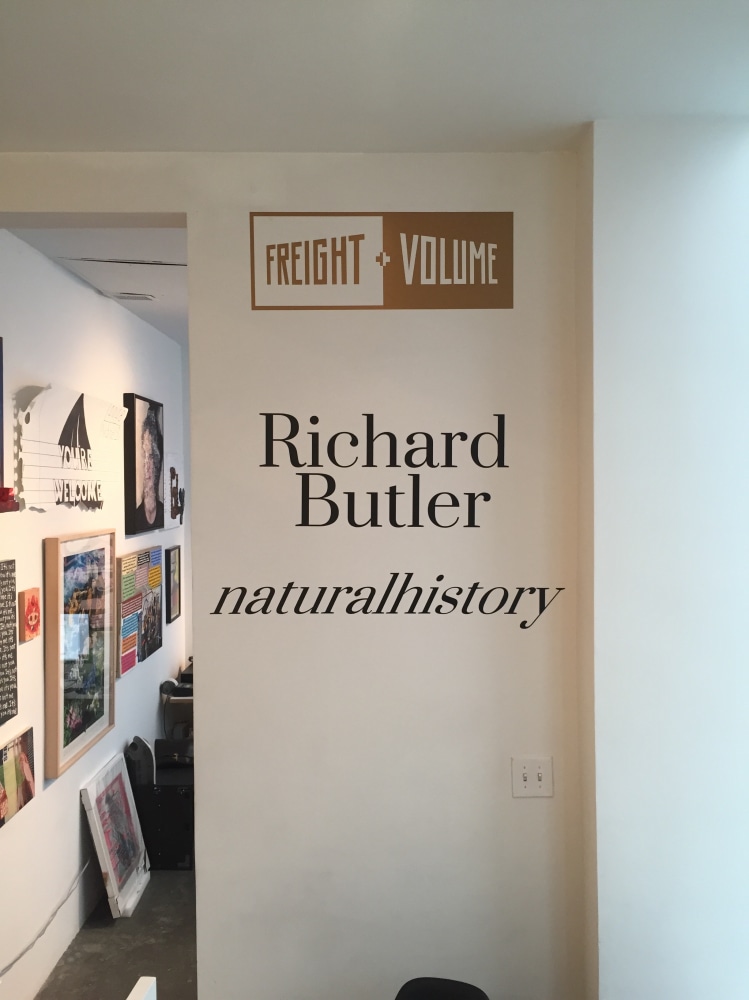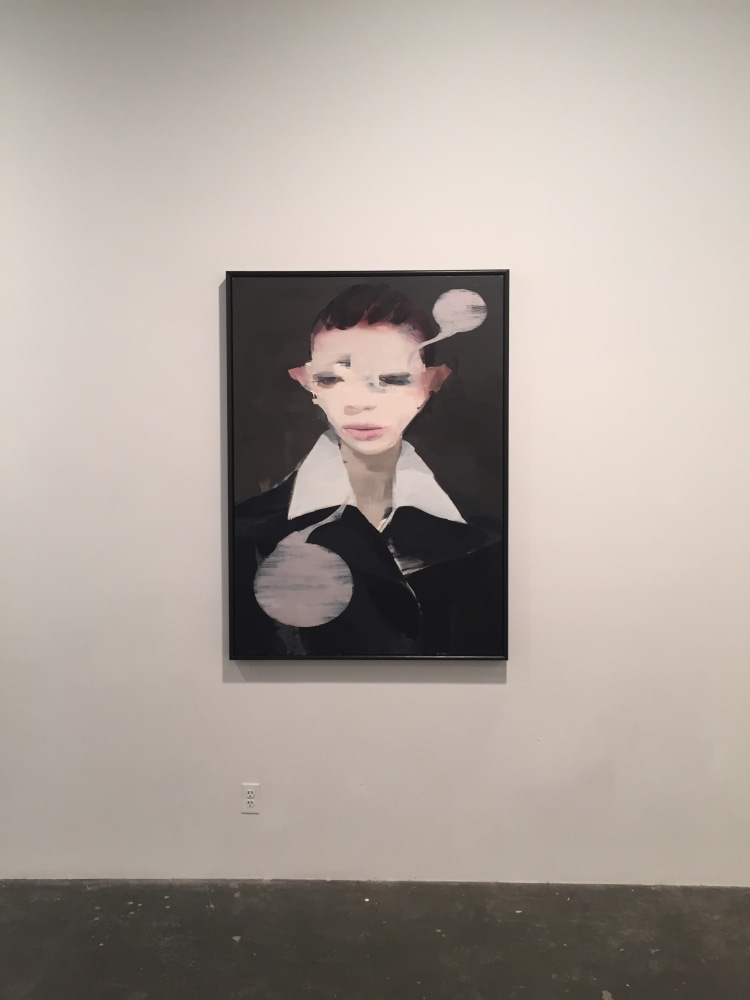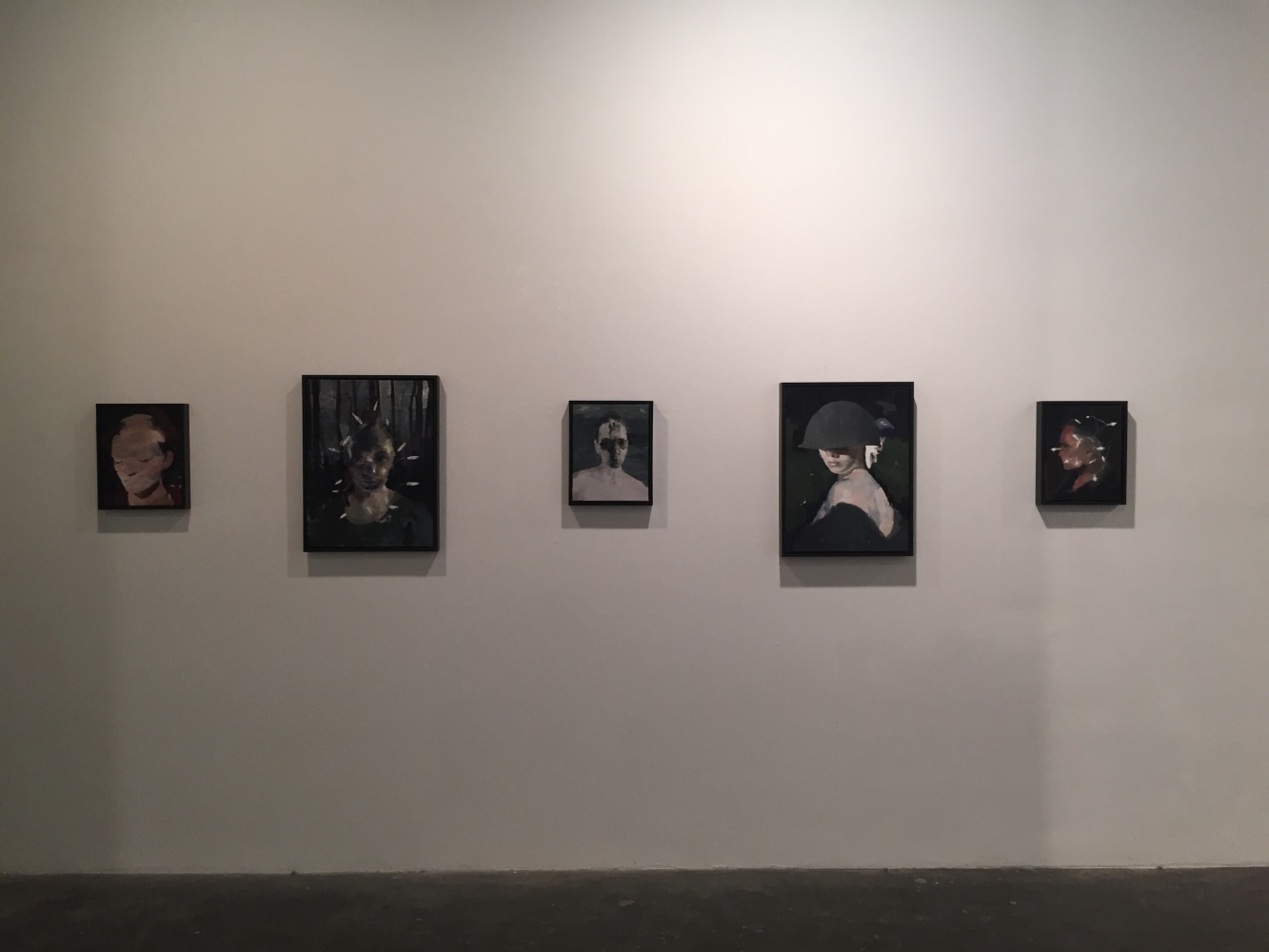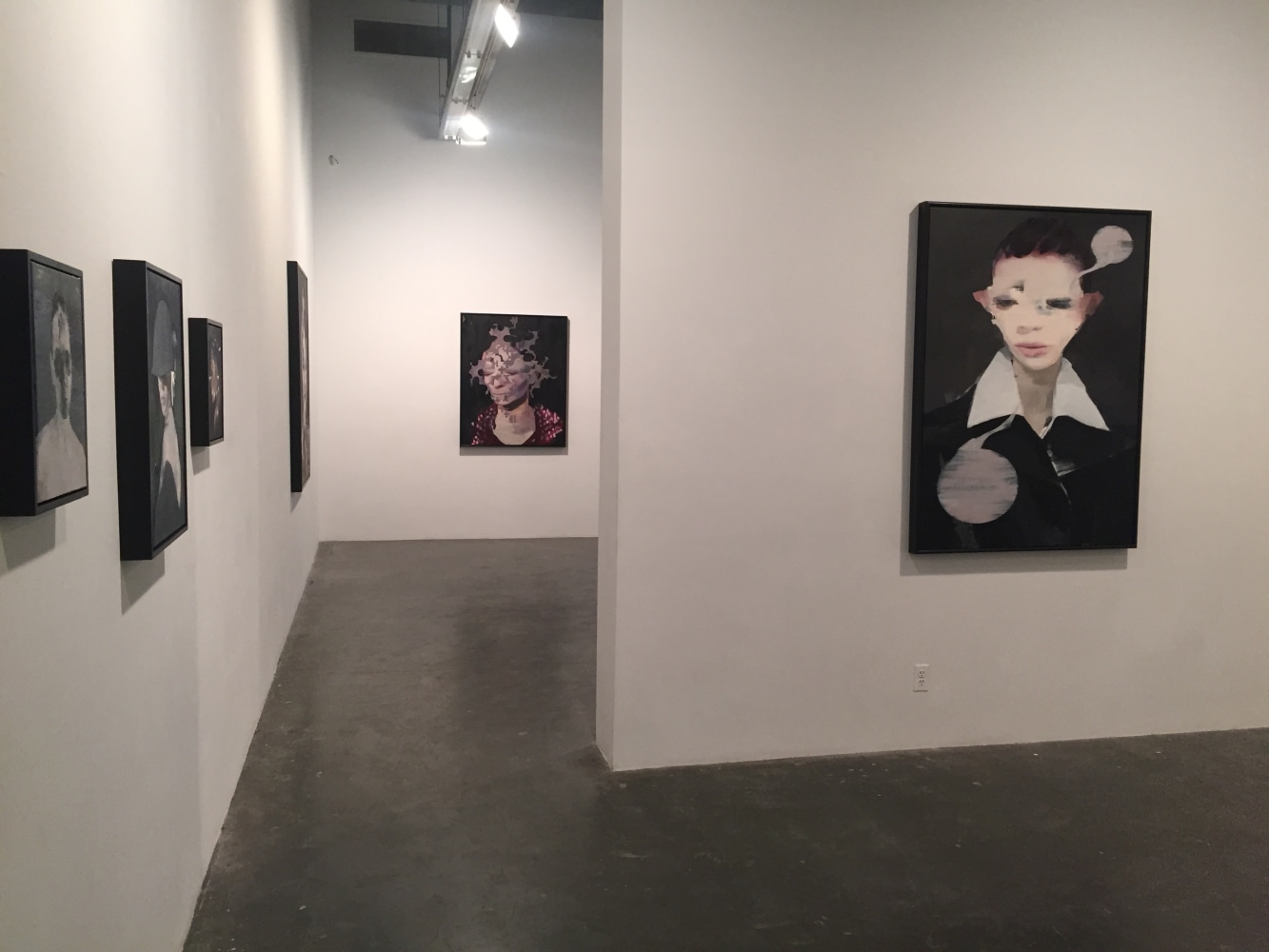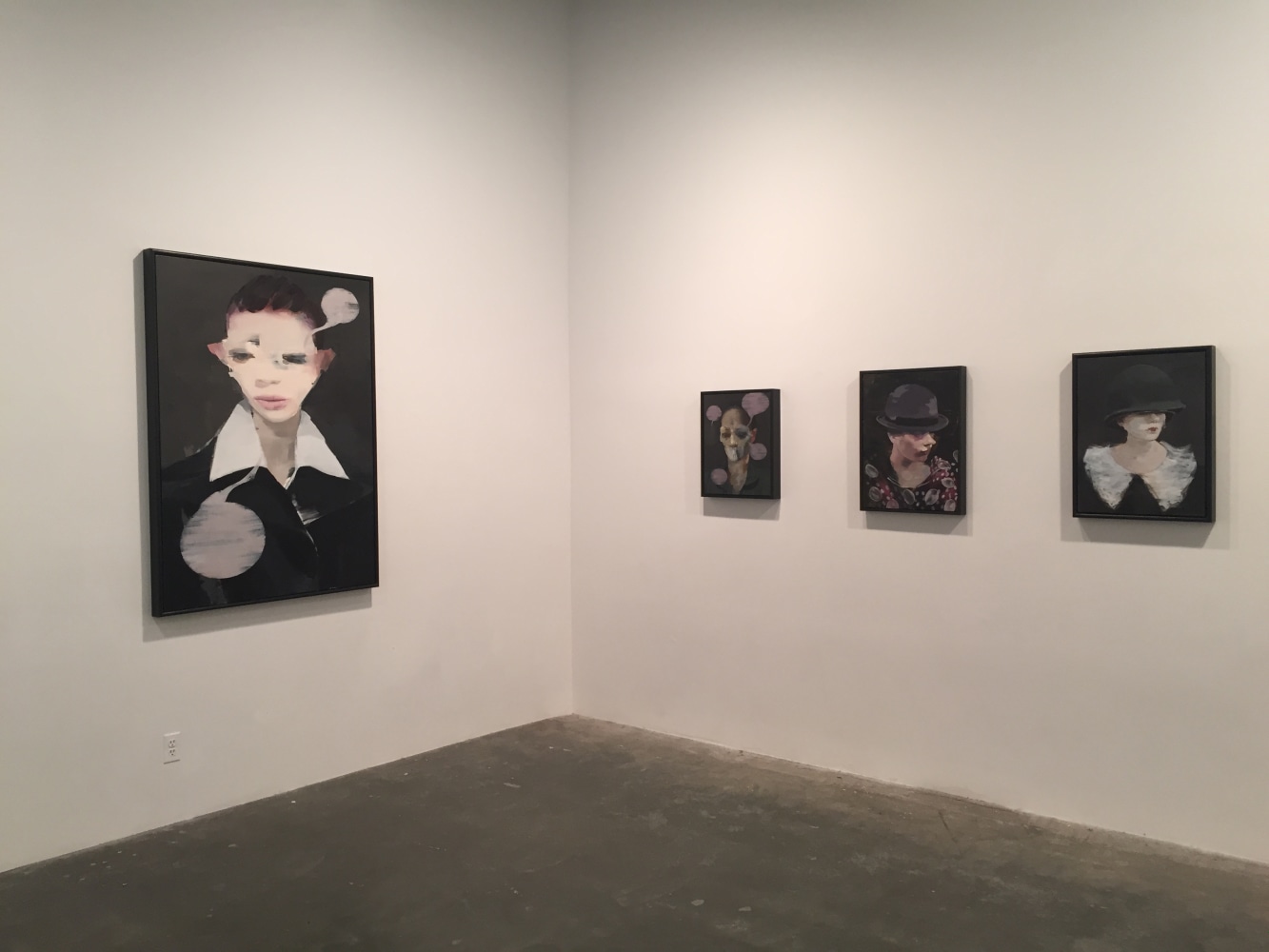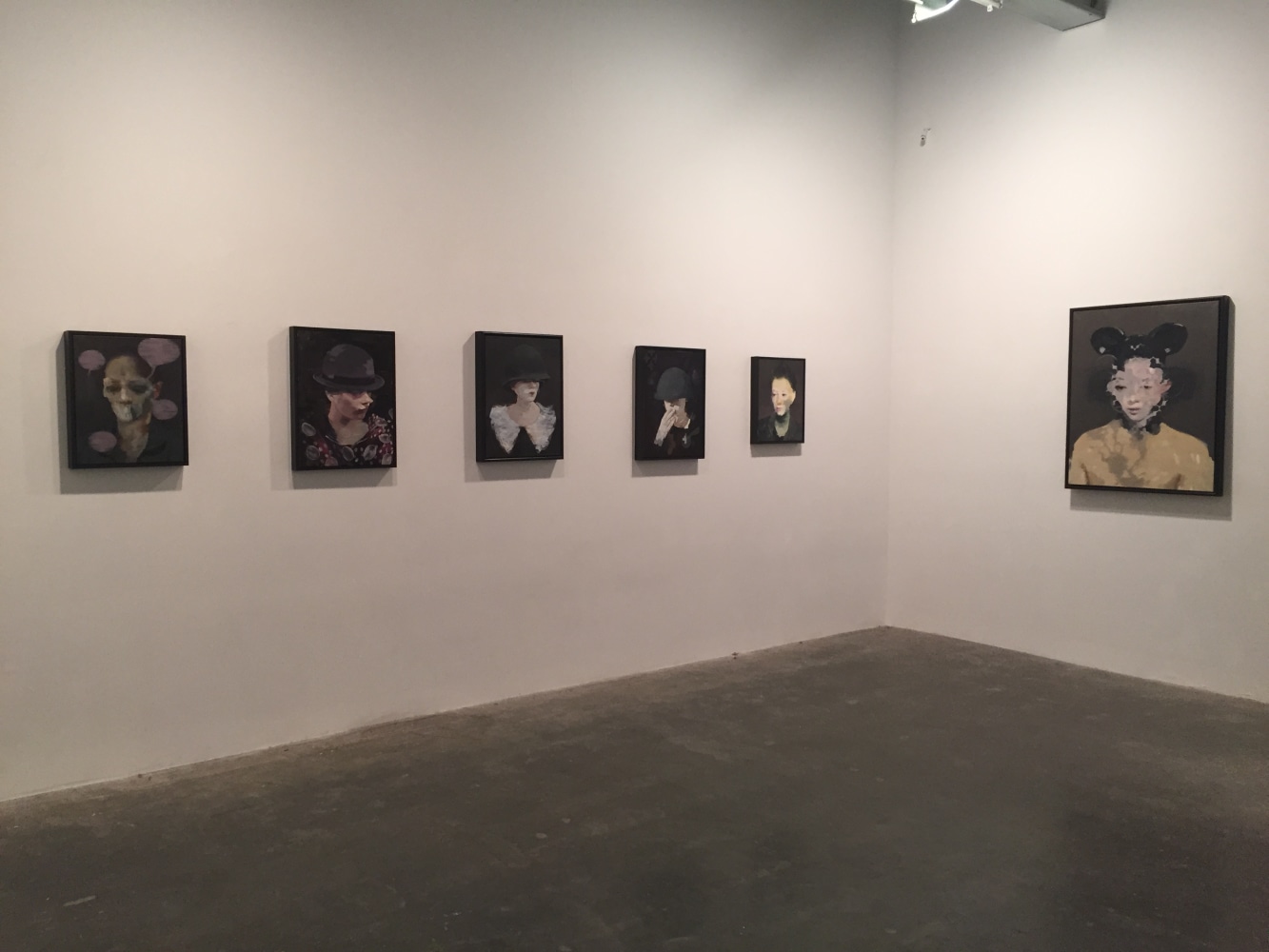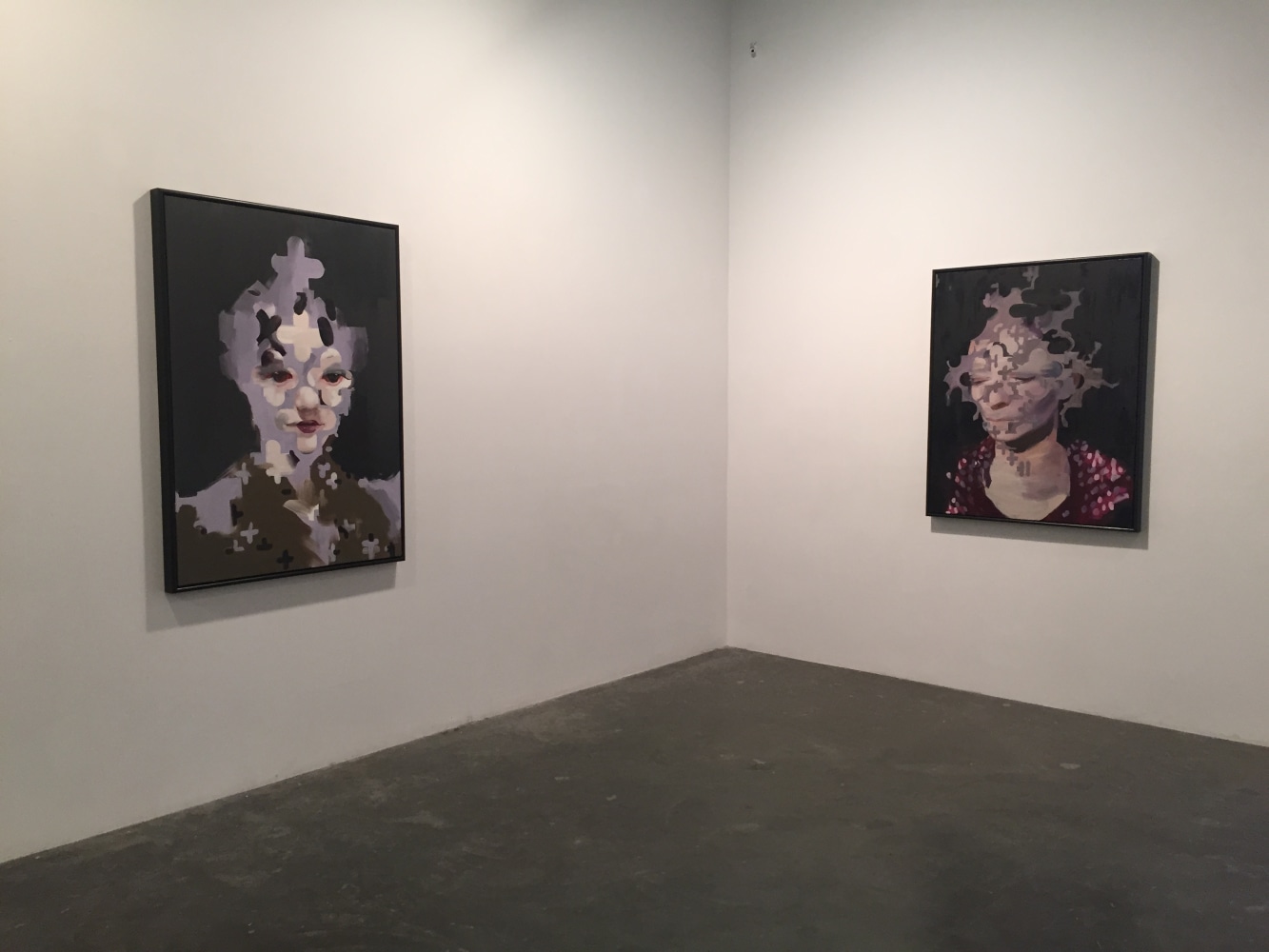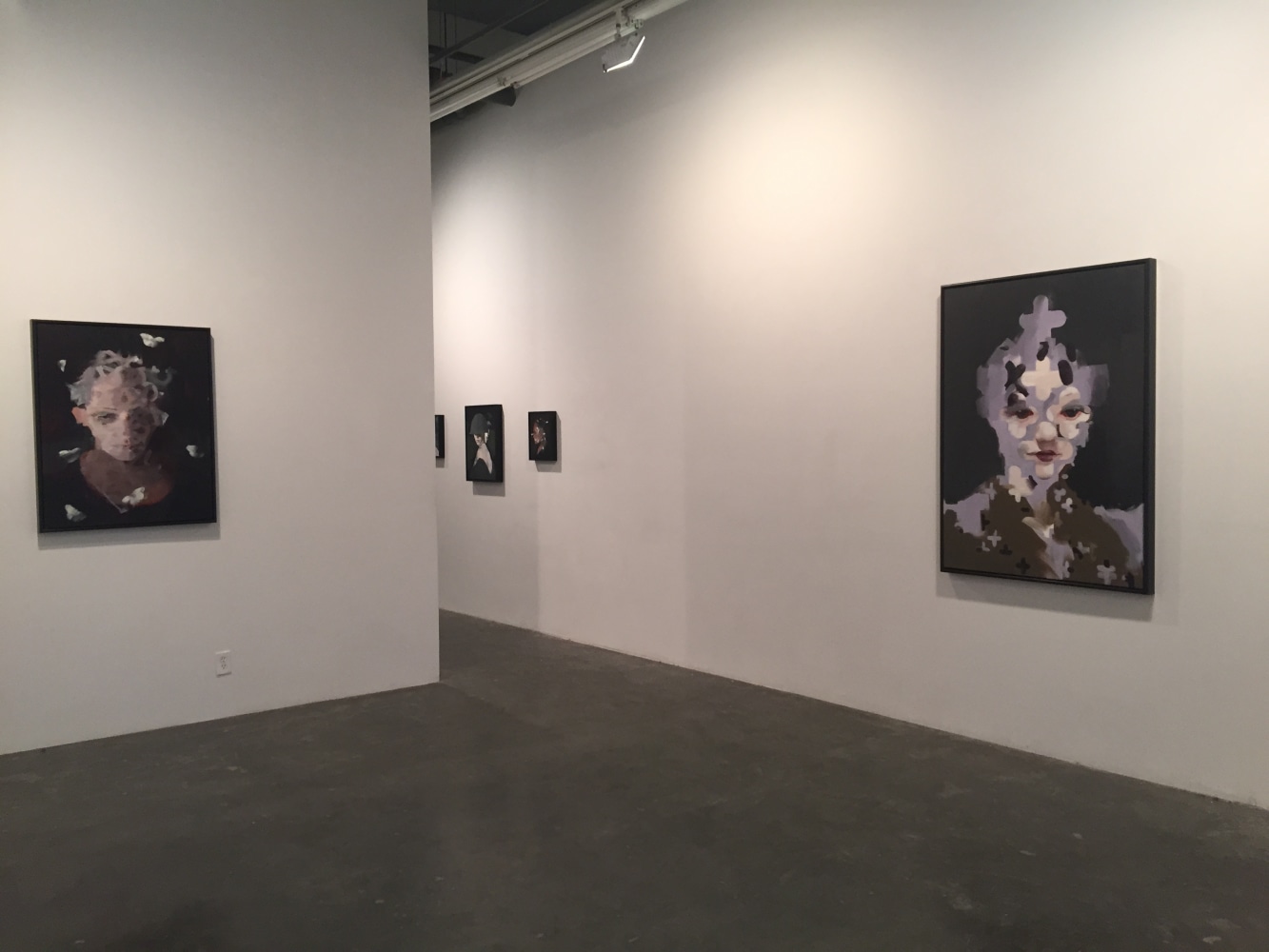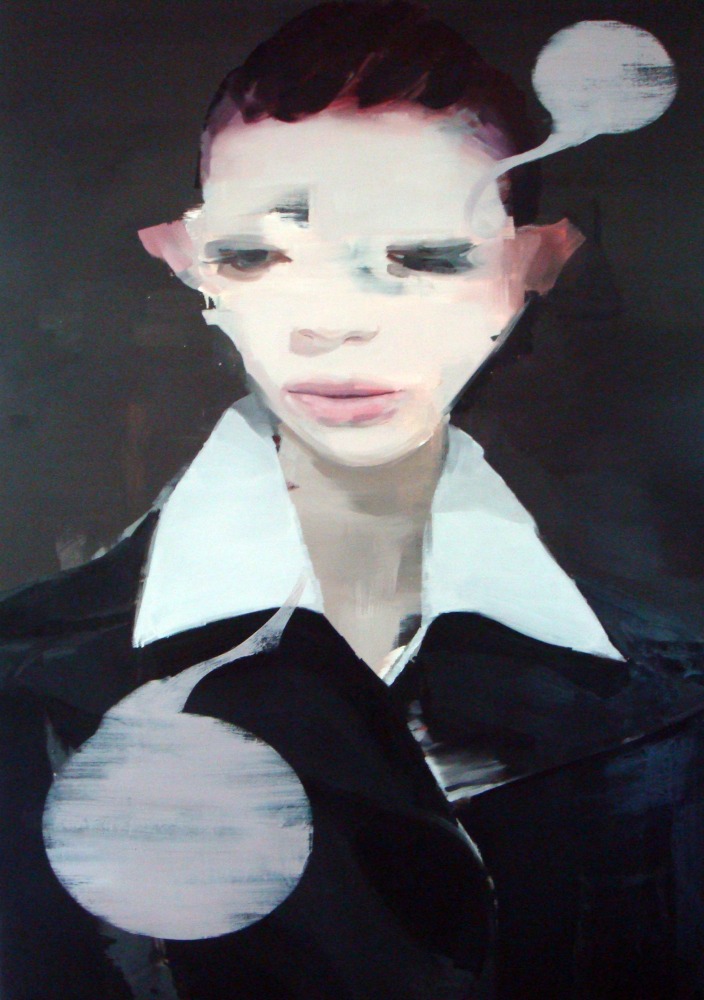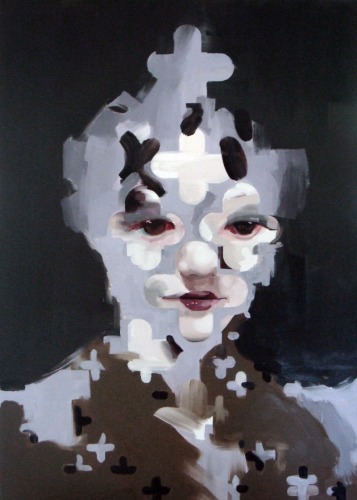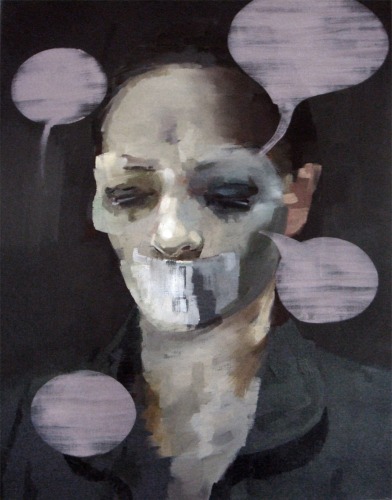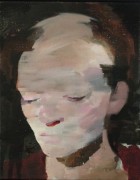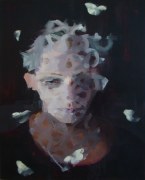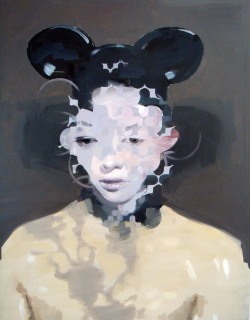Richard Butler: naturalhistory @ FREIGHT+VOLUME
March 12, 2015 - April 11, 2015
Opening reception: Thursday, March 19, 2015, 6-9pm
For his fourth solo at Freight+Volume, Richard Butler continues his quest for the true portrait – the portrayal of emotion and soul – behind the façade. Using a motif of confessional screens, veils, masks and shrouds, he creates a labyrinth of psychological layers in which the viewer is invited to transverse and transgress, and through this transgression gain access to an understanding of the subject as well as the self. Butler moves through this complex realm with ease, both as a master painter and explorer of the psyche. He combines classic beauty and the surreal, even the grotesque, with a delicate grace. While at first glance his portraits may seem darkly religious, cultish, even fetishistic, with undertones of S + M worlds or bondage or allusions to hallucinogenic horror – Butler insists they are merely attempts to portray a single human being (in this case his daughter, or occasionally another family member) – in a variety of guises. After all, the artist declares, “These are just paintings”, and Butler allows the viewer to project his or her own imagination onto them.
naturalhistory is a new collection of portraits which delve as much into the mind and soul of his subject as the painter himself. The mystery of the person depicted, and what the artist refers to as “the void”, echo the artists own struggle to understand himself – as an artist, father, husband, musician - as a human being. Butler’s own non-linear journey becoming an artist and musician is revealing in this regard.
The following is an interview between Lyle Rexer, critic, curator, and author, and Richard Butler, published in BOMB magazine August 29, 2013. Click here for the full interview.
Lyle Rexer: When you formed the Psychedelic Furs, did you put art on the back burner?
Richard Butler: Well, it wasn’t that simple. I would go around visiting galleries—I would go to Marlborough in Bond Street, and I would say, “How the hell do you get into one of these places?” And two months before I was about to graduate one of my teachers, who clearly didn’t make it and was trying to make himself feel better, said to us, “You guys need to figure out what you’re going to do with yourselves because there are only a handful of people who can make a living from art.” It wasn’t exactly true, but what did we know? I worked in a silkscreen print shop, figuring I could steal stuff to do my own work, but I had this idea to start a band with some friends. I couldn’t actually play anything, and I still can’t play guitar, just a few chords, but I naturally figured-
LR: You’ll be the front man.
RB: Of course. What’s the point otherwise? Who says: "Hey, I want to start a band and be the drummer!"? It moved along well, a lot of fun and really exciting, and the next thing I knew we were under contract to Columbia after only having played 14 shows in England. When punk rock came along, the record companies didn’t have any idea what was going on. All the bands they were signing were pop rock bands that were incredibly proficient and pleasant but old school, bands like Dux Deluxe and Café Society. It just wasn’t relevant to what was going on in England, what with the Thatcher years, garbage strikes, unemployment at its height; people were angry. Punk rock underlined that, it said: This is where we are and we’re pissed off.
LR: After a long hiatus, how did painting come back into your life?
RB: There were two shows in New York about 1990, a Francis Bacon retrospective and an Anselm Kiefer show. I’d been aware of Bacon, and I loved his work, but Kiefer I didn’t know, and the impact of both of those was that I wanted to be making things again. They aren’t really influences but I loved the power of their work, a kind of visceral attack. I mean, you can't imitate someone's brushstroke—it's peculiarly him. Anyway, I started drawing in my apartment. This was in the early 1990s. I did a horse’s head with branches coming out of it, sort of mythological, and large portraits, five feet tall. I still have one, a painting of my father, which was one of the first ones I did. The rest I left by the wayside.
LR: Right. You take a second look and it’s like, “Well, nobody’s going to hire me to do that.”
RB: Yeah, but what struck me was how much had happened in art. I mean I wasn’t trying to play catch-up, but in whatever town I was in, I’d go into a museum or a bookstore and look through things and I was amazed at all that had happened. I was finding my way by taking it all in, deciding what I liked and didn’t like, what hit me emotionally, not trying to follow someone’s path.
LR: Painted portraits produce a sense of the uncanny because there is a doubling of presence not merely as representation, unlike a photograph. How did the portrait come to be your focus?
RB: As you say, a portrait has a focus and a presence, and as much as I might like to look at a picture of flowers by Chardin, it does not have the immediacy of a Rembrandt or a Holbein. The skin tones, the fact that it is a person—I want to try to do that.
LR: And your daughter, Maggie, has become your occasion, your subject, your pretext and your muse. She figures in almost all your paintings.
RB: She’s been all of those things since she was a baby and I started painting her. Francesco Clemente once said that he had done so many self-portraits that by now it was like looking at a cipher. You see it so much that you don’t really read it. I think I’ve been doing something like that with Maggie. I started when she was a just a small child, a blank slate, really. The feeling I’m after is a melancholy, a void we have in ourselves, and I’m trying to portray that through her. I don’t go up to a canvas and say, “Now I’m going to paint the void that exists in people, and I’m going to avert the gaze.” I notice after the fact that they all have this sentiment, and they all have a consistent palette.
LR: Lots of blacks, browns, and deep reds, with that northern European darkness.
RB: I was listening to a book on tape by Alan Bennett [humorist and member of the comedy group Beyond the Fringe, with Peter Cook and Dudley Moore] and he mentioned that he tended to prefer paintings that all looked like a bit of gray had been put into the color. He suggested it had something to do with the English part of him, and I thought maybe there’s something to that. I mean there are exceptions, like David Hockney and Ivon Hitchens, but for the most part the English tend toward muted colors because we grow up in a very muted landscape.
Richard Butler was born in Hampton Court, England. He studied painting at the Epsom School of Art and Design. Fifteen years ago, after a successful career as founder and singer/songwriter for the rock band The Psychedelic Furs, Richard returned to painting. His work is included in many significant national and international collections. He lives and works in Beacon, New York.
Please join us for a reception with the artist on Thursday, March 19, 2015 from 6-9 pm. Refreshments will be served. For more information please contact nick@freightandvolume.com or call 212-691-7700.

